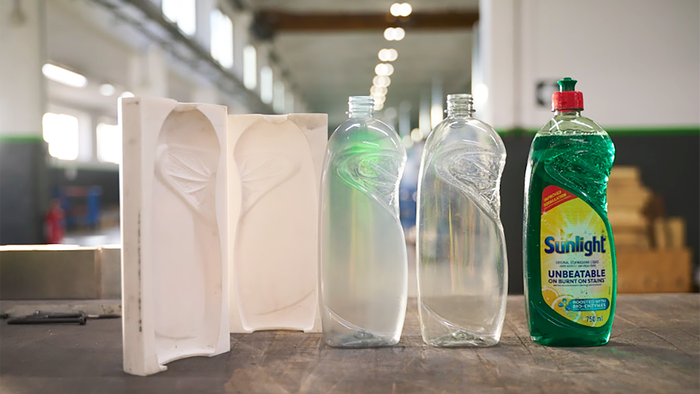Medical Device Manufacturers Seek More Sustainability, Supplier ‘Maturity’
Executives from BD, Abbott, Edwards Lifesciences, and Boston Scientific share their post-pandemic strategies of responsible sourcing to foster supply chain sustainability, efficiency, and resiliency — without added costs.
June 24, 2024

At a Glance
- MDMs focus on sustainable sourcing without extra costs, aiming for joint ventures to enhance designs.
- Companies like BD and Abbott use platforms like EcoVadis to assess and improve supplier sustainability and ethical practices.
- Simplifying processes and early supplier engagement help save costs and build resilient supply chains in medical packaging.
How do your medical packaging suppliers rate from a sustainability point of view? It’s a question more medical device manufacturers (MDMs) are asking as residual challenges of the coronavirus have remained, post-pandemic.
The catch, however, is that not all MDMs will always be willing to pay for that sustainability directly, according to a panel of experts that convened recently at thePACKout conference in Coronado, CA.
“We’re looking for joint ventures for what can we do together to focus on key quality parameters and looking into what can be designed in to being sustainable,” said John Schneider, senior manager of global supplier management at Edwards Lifesciences, a med-tech company based in Irvine, CA, that specializes in artificial heart valves and hemodynamic monitoring. “We don’t want to pay for it. We’re reaching out to suppliers to let them know of opportunities to partner for the benefit of creating effective designs.”
COVID impacted essentially all facets of society and the industrialized world. The pandemic’s effects have generally lessened over the last calendar year but continue to prove that nobody is immune to the myriad complications caused in the aftermath. At some point, however, the lingering challenges have to be accepted as necessary changes stemming from a shift in expectations and needs that have developed as a result of the pandemic.
For those responsible for medical device packaging, these changes have required new approaches to collaboration and communication with suppliers and others who contribute to the supply chain to reduce costs, optimize inventory, and maintain the flow of critical medical products. Dynamic adjustments will continue to be needed if the future of packaging is to become more resilient, sustainable, and cost effective, say those who participated in thePACKout panel.
“We need to take the past four years and transform ourselves into a more resilient and mature supply chain,” says Preethi Kasthuri, director of global procurement at Becton, Dickinson and Co. (BD), a multinational medical technology company based in Lakes, NJ. “As we’ve faced different challenges [such as] labor shortages, inflation, material qualifications, and a shortage of raw materials, we want to continue to invest more in strategic supply relationships to problem-solve.”
Attention to ethical accountability.
Moderated by Dennis Sullivan, senior sourcing manager at Boston Scientific, Watertown, MA, the session Overcoming the Supply Chain Hangover: Navigating Post-Pandemic Healthcare Packaging Challenges, offered insights from industry peers who explained how their companies have identified goals for sustainability and accountability from a medical technology standpoint.

“We’re all faced with the same challenges,” said Sullivan. “We’re all in this together.”
At BD, the first area of focus is on the carbon footprint, said Kasthuri. “As we look at our Scope 1, 2, and 3 emissions, about 60% is driven by materials that we procure from suppliers. As we work closely to understand what their decarbonization strategies are, we’re assessing what their maturity level is. And we are rating our suppliers based on their carbon strategy maturity level.”

Kasthuri and her colleagues are also taking a collaborative approach to accountability by working with suppliers to determine how they can introduce alternate materials that might be “greener” while reducing the use of materials of concern (MOCs).
“With the regulatory changing landscape, there’s a lot of materials that we need to focus on as an organization,” Kasthuri said. “We work closely with our suppliers in identifying what type of MOCs are in the products we buy. And we are working with them proactively to see how we can mitigate and reduce our dependencies on these MOCs.”
Another area of focus at BD hinges on what Kasthuri describes as responsible sourcing, which has been gained through the use of tools such as EcoVadis, a digital platform that helps with managing environmental, social, and governance (ESG) risks. “We are assessing all of our suppliers from a human rights standpoint,” she said. “We want to ensure that our suppliers are using ethical practices as they produce material for us.”
Suppliers are scored based on their maturity, with low ratings signifying a lack of awareness for sustainability. “Based on where they fall, our engagement model with them will vary,” said Kasthuri.

At Abbott Laboratories, leadership has also begun to ensure suppliers are compliant with EcoVadis among their metrics, says Eli Nasr, global manager of procurement packaging materials. “From an ethical sourcing perspective, there’s a big push and emphasis at Abbott on utilizing EcoVadis, and when it comes to packaging and packaging waste regulation (PPWR), trying to shift from a reactive mentality to a proactive state of mind when it comes to sustainability and procurement,” he said.
Value creation and cost savings.
With more recovery of material supplies and rebuilt safety stocks occurring as the pandemic becomes more distant, refocus on value improvement and cost efficiency is important, experts agree.
At Edwards Lifesciences, Schneider says a core principle is simplification. “Too often, we tend to complicate things,” he said. “When I [communicate with] my design teams, we look at the core building blocks of product packaging in order to build our products. We look at the critical parameters that are going to be key to making better choices for supply chain, cost savings, and better supply relationships.”
The nature of the work at Edwards requires staff to be more unique in what is prioritized, said Schneider, especially as it relates to sterilization and looming regulations by the United States Environmental Protection Agency. “There are certain parts [of the regulations] that are unclear about how it’s going to impact primary and secondary packaging, but we’re working diligently with our regulatory and product search partners in understanding the exact scope,” Schneider said.
A concept based on supply chain effectiveness recently launched at Abbott as part of a quarterly-driven agenda based on gross market improvement is intended to accelerate sustainability beyond “buzzword” status, said Nasr. “We really want to be understanding and streamlining the supply chain,” he said. “How we communicate internally and externally with suppliers has been a big part of [our goals]. We’re trying to understand what it is that we are asking suppliers for, and we are starting to see investments from a procurement perspective for sustainability. Taking an “old school” approach and fixating on better pallet configurations and maximizing truckloads have also become a refocus point, Nasr said.
The easing of pandemic tensions has also allowed staff at BD to partner with suppliers on joint value creation endeavors. “As healthcare costs continue to rise, we have a joint responsibility with suppliers to protect revenue,” said Kasthuri. “We are providing early engagement as we introduce new products to influence early sourcing decisions for making more risk-free supply chain decisions earlier. What we all do impacts healthcare as a whole. There is a patient at the end of everything we do.”

This mindset is fostering what Schneider describes as a more progressive and engaged environment despite the various challenges presently. “There’s a lot of collaboration in this industry,” he said. “I’m amazed at the impact we have on saving patients’ lives. The more we can be engaging up front with all departments, especially in terms of packaging, as opposed to being an afterthought, the more unique we can be with our designs.”
About the Author(s)
You May Also Like


